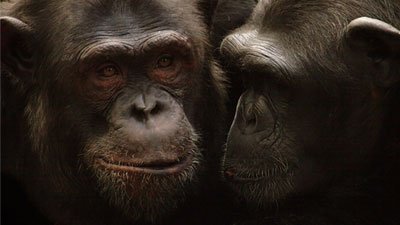
MIT Linguist Claims Human Speech Evolved from Birds
What do honeybee waggles and birdsong have to do with human speech? MIT linguist Shigeru Miyagawa believes they demonstrate that human speech evolved the way Darwin thought it did.
News Source
Charles Darwin, in the Descent of Man, wrote, “The sound uttered by birds offer in several respects the nearest analogy to language,” adding human language begun as singing “might have given rise to words expressive of various complex emotions.”
Miyagawa is lead author of the February 2013 study “The emergence of hierarchical structure in human language.” He points out that human language is completely unique because it combines expressive qualities (analogous to birdsong) with interchangeable information-carrying parts (analogous to honeybee waggle dances and primate alarms). These two sorts of communication are never combined in animals. Therefore, Miyagawa concludes they both evolved in humans.
“‘There were these two pre-existing systems,’ Miyagawa says, ‘like apples and oranges that just happened to be put together.’” Coauthor Robert Berwick adds, “When something new evolves, it is often built out of old parts. We see this over and over again in evolution. Old structures can change just a little bit, and acquire radically new functions.” They write, “We account for the appearance of a novel function, language, within a conventional Darwinian framework, along with its apparently unique emergence in a single species.”1
We account for the appearance of a novel function, language, within a conventional Darwinian framework, along with its apparently unique emergence in a single species.
Birdsong is similar to human language in several ways. Both are learned best while young. Humans and birds both learn by imitating others, often by repeatedly babbling to practice sequences of sounds in order to learn the necessary muscular motions. And both involve functions localized to one side of the brain. Yet even in birds that produce complex loops, repetitions, and branches using the same song elements, those “song elements are never combined to yield new ‘meanings.’”1
On the other hand, honeybee waggle dances consist of two interchangeable informative elements. The direction of the dance conveys the compass heading of a food source. The speed of the dance conveys information about distance.1 Likewise, monkeys and apes may interchange different calls to alert their neighbors to the kind of predator nearby (python versus leopard, for instance).1
Human speech has characteristics resembling both sorts of animal communication. The way birdsong rearranges chunks of sound is analogous to the way human language rearranges words and phrases to express completely original ideas. This originality and creativity goes beyond the simple informative combinations in bee dances. Miyagawa cites additional unique qualities of human language as evidence of evolutionary advances that became possible when these basic elements evolved in the same species.1
The researchers conclude that early human ancestors first learned to sing and then figured out how to rearrange sounds to convey actual information. Berwick says, “It's not a very long step to say that what got joined together was the ability to construct these complex patterns, like a song, but with words.”
So how do these researchers know that language evolved this way? Actually, of course, they don’t. They even write in their published study, “While speculation about evolution without direct data remains challenging, it may still be possible to provide an account broadly compatible with what we know about human language syntax, along with the apparently rapid emergence of language” (emphasis ours).1 In other words, it is not possible to scientifically verify their claims through any sort of observational science. Though they admit that figuring out how something evolved “without direct data remains challenging,” a more realistic statement would have admitted that to do so is impossible.
They also write, “Like many evolutionary innovations, we propose that language arose from the adventitious combination of two pre-existing, simpler systems evolved for other tasks.”1 In other words, even though there is no direct observational data to support their evolutionary model, they assume that—because language is a combination of simpler components that uniquely combine to allow a virtually infinite number of abstract meanings to be expressed—it must have evolved from such simpler components.
Thus, the authors have no scientific support for their conclusions. They assume their Darwinian evolutionary explanation is valid because they assume that language—like everything else—must have evolved in order to exist.
The Bible in its history provides the actual origin for language. God made Adam and Eve in His own image. God communicated with them, and Adam’s first responsibility involved naming animals. Clearly Adam and Eve were created with the ability to speak. All people spoke the same language (Genesis 11:1) until God confused the languages at the Tower of Babel in the years after the global Flood. To be able to express a virtually infinite number of original and abstract thoughts is indeed a quality unique to humans. The source of this ability is not explained by evolutionary surmises that primarily recognize the unique heights to which human speech can attain, but by the simple fact that we were created with this ability to use true language.
Further Reading
For More Information: Get Answers
Remember, if you see a news story that might merit some attention, let us know about it! (Note: if the story originates from the Associated Press, FOX News, MSNBC, the New York Times, or another major national media outlet, we will most likely have already heard about it.) And thanks to all of our readers who have submitted great news tips to us. If you didn’t catch all the latest News to Know, why not take a look to see what you’ve missed?
(Please note that links will take you directly to the source. Answers in Genesis is not responsible for content on the websites to which we refer. For more information, please see our Privacy Policy.)
Footnotes
- Shigeru Miyagawa, Robert C. Berwick, and Kazuo Okanoya, “The Emergence of Hierarchical Structure in Human Language,” Frontiers in Psychology (February 20, 2013), doi:10.3389/fpsyg.2013.00071.
Recommended Resources

Answers in Genesis is an apologetics ministry, dedicated to helping Christians defend their faith and proclaim the good news of Jesus Christ.
- Customer Service 800.778.3390
- © 2024 Answers in Genesis







